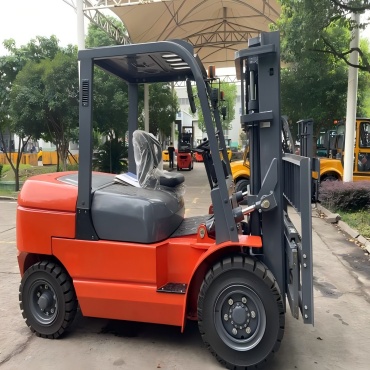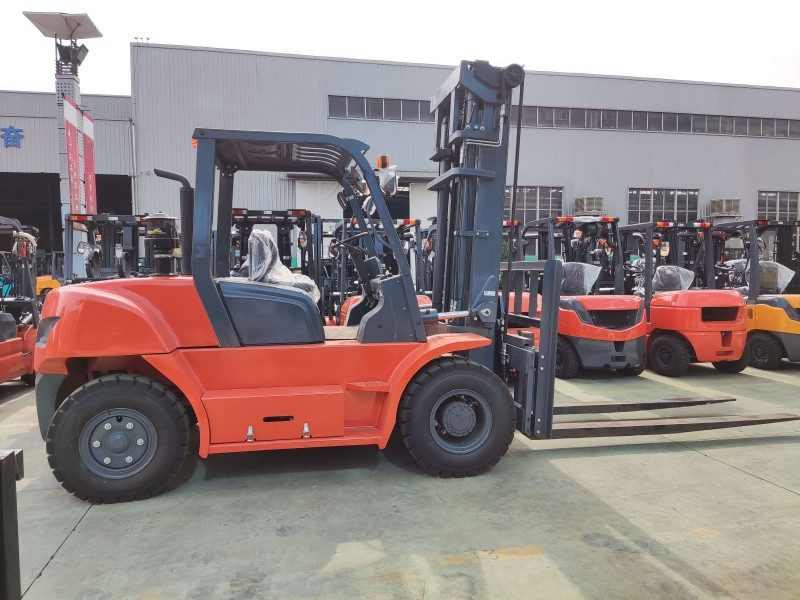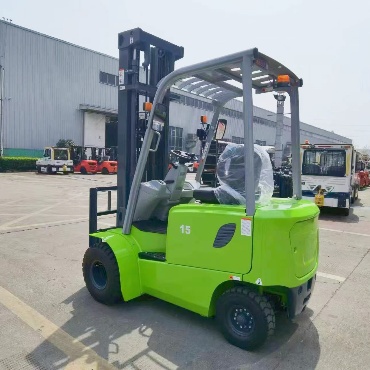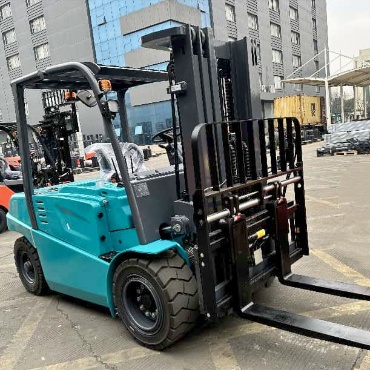- Diesel Forklift
-
- 25-30tonne Diesel Forklift 16T Forklift Truck 4.5 Ton Diesel Forklift 48 Ton Diesel Forklift 3 Ton Diesel Forklift 3.5 Ton Diesel Forklift 2.5 Ton Diesel Forklift 33 Ton Diesel Forklift 15 Ton Diesel Forklift 10 Ton Diesel Forklift 8 Ton Diesel Forklift 4 Ton Diesel Forklift 6Ton Forklift 2 Ton Diesel Forklift 1 Ton Diesel Forklift 1.8 Ton Diesel Forklift 1.5 Ton Diesel Forklift 7 ton forklift 35 ton Forklift Rough Terrain Forklift
- Electric Forklift
-
- Narrow Aisle Stand Up Counterbalance Forklift – High Efficiency Warehouse Solution 3.8ton Low Voltage Lithium Battery Forklift 12t Lithium high capacity forklift 12t large capacity electric forklift 8ton Electric Forklift 10t electric forklift truck 25ton Lithium Battery Forklift 7ton Electric Forklift 16-20t Large Capacity Lithium Battery Forklift 2 Ton Electric Forklift 1.8 Ton Electric Forklift 6 Ton Electric Forklift 1.5 Ton Electric Forklift 1.0-1.5 Ton Electric Forklift 2.5 Ton Electric Forklift 3.5 Ton Electric Forklift 4.0-4.5 Ton Electric Forklift 5 Ton Electric Forklift 3 Ton Electric Forklift 1.6-1.8Ton Three Wheel Electric Forklift 2 Ton three wheel electric forklift
- Rough Terrain Forklift
-
- 3.5t-4ton 4 wheel drive forklift 7 Ton All Rough Terrain Forklift 2-2.5T Rough Terrain Forklift Truck 4 ton off road forklift truck 3t 4 wheel drive forklift for sale 3.5t Two Wheel Drive Rough terrain forklift 3T Diesel Rough Terrain 2WD Forklift FLIFT 3.5ton all rough terrain forklift for sale 2WD 3t off Road Rough Terrain Forklift
- Electric Reach Truck & Pallet Truck / Pallet Stacker
-
- 5ton end rider electric pallet truck with customized 1.8m fork length 10ton-15ton heavy duty electric pallet truck 2.5ton all terrain electric pallet jack 1.5ton-2ton all terrain electric pallet truck with crane jib Counterbalanced Pallet Stacker 1600 lb to 2000 lb Capacity for Indoor Warehouses Heavy Duty 2T-2.5T Electric Stacker Forklift | High-Performance Stacker Lift High-Capacity 2.5t electric reach truck 1.0t -1.5t Electric Walkie Straddle Stacker 2ton Fully Electric Pallet Stacker 3 stage mast 2ton electric rough terrain pallet stacker 1.5ton off road Rough Terrain Stacker 1.8ton walkie Electric Pallet Truck Jack 1.5Ton Electric Pallet Stacker | Durable Walkie Stacker for Easy Material Handling 1200kg walking type electric pallet stacker 2ton roll and reel electric pallet truck Walkie Counterbalanced Stacker 1500–2000kg Capacity Compact Design 1ton outdoor rough terrain counterbalanced pallet stacker 3300lbs Electric off-road pallet stacker 2t Rough Terrain Pallet Truck Powered Pallet Truck with PU Wheels-2000kg Electric Pallet Jack 2t Elecric Hand Truck 1.5 Ton Electric Walkie Pallet Truck – Compact Power for Efficient Material Handling 2 Ton Reach Forklift 1.5 Ton Reach Forklift 2Ton -3Ton Electric Pallet Truck Semi-electric Pallet Stacker 1ton-1.6ton 3 Way Pallet Stacker Multi-Directional Sideloader Forklift 4 direction reach truck
- Customization Forklift
-
- 900kg CDD09B Electric Walking Type Counterweight Stacker Professional Walking Type Electric Stacker with Special Attachment 1ton Electric Outdoor Rough Terrain Telescopic Spreader Stacker 4t QDD40 Seated type Electric Tractor QDD60 Seated Type Fully Electric Tractor 3t QDD30C Electric Tractor with Turning Radius 1545mm 2t CQD20A Electric Simple Type Reach Forklift Truck 1.5t CQD15A Simple Type Electric Reach forklift Truck 5t Convertible Seated Electric Flat Truck 3t CBD30Z Electric Vehicle Transfer Truck 1.5t CDD15Y Electric Pallet Stacker (Rough Terrain) 1t CXD10-45 Electric High Lift-Order Picker 2t CQD20S-60 Four-way Walking Type Reach Forklift Truck CDD10A/15A Walking Type Fully Electric Pallet Stacker 3t QDD30A Standing Type Electric Tractor 1t CSD10 Man Mount Three-way Stacker 1.5t AGV type CDD15J-16 Electric Pallet Stacker CBD80 8t Electric Pallet Stacker 6t CBD60 Electric Pallet Stacker CBD120 1.2t Electric Pallet Stacker 2t CDD20D-30 Walking type Electric Pallet Staccker CDD08B-25 Counterweight Electric Pallet Stacker
- Forklift Attachements
-
- Waste Paper Fixture Fixed Short Arm non-sideshifting non-sideshifting Fixed Short Arm non-sideshifting Non-sideshifting Hinged Forks Caton Clamp Rotator non-Sideshifting Tire Clamps Pusher Turning Fork Clamps non-sideshifting Log Holder Sideshifting Broke Paper Clamps Sideshifting Sideshifting Single Load Stabilizer Fork Positioners Single Double Pallet Handler
2025 Short Wheelbase Forklift Purchase Guide: Efficient Choice for Indoor Operations
Date: 2025-05-16 View:
2025 Short Wheelbase Forklift Purchase Guide:
An Efficient Choice for Indoor Operations
Among the many types of forklifts, short wheelbase forklifts are favored in specific operation scenarios due to their unique advantages.
If you are considering introducing suitable forklift equipment for your company, in-depth knowledge of short wheelbase forklifts will undoubtedly help you make better decisions.
First, let's first understand what a short wheelbase forklift is?
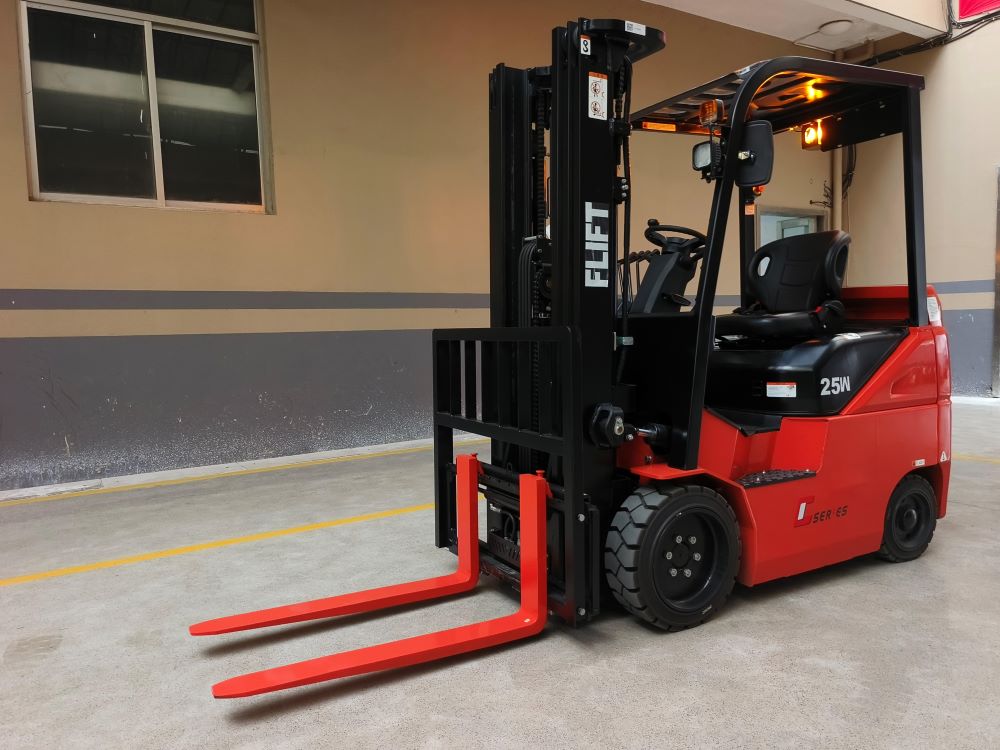
A short wheelbase forklift refers to a type of forklift that improves operational flexibility and passability by shortening the wheelbase (Wheelbase, the horizontal distance between the center of the front and rear wheels) between the front and rear wheels of the vehicle body.
Its core design goal is to achieve efficient operation in narrow spaces, especially for scenes where traditional forklifts are difficult to operate, such as warehouses, workshops, and containers.
What are the advantages and characteristics of short wheelbase forklifts?
Ultra-small turning radius, flexible and maneuverable
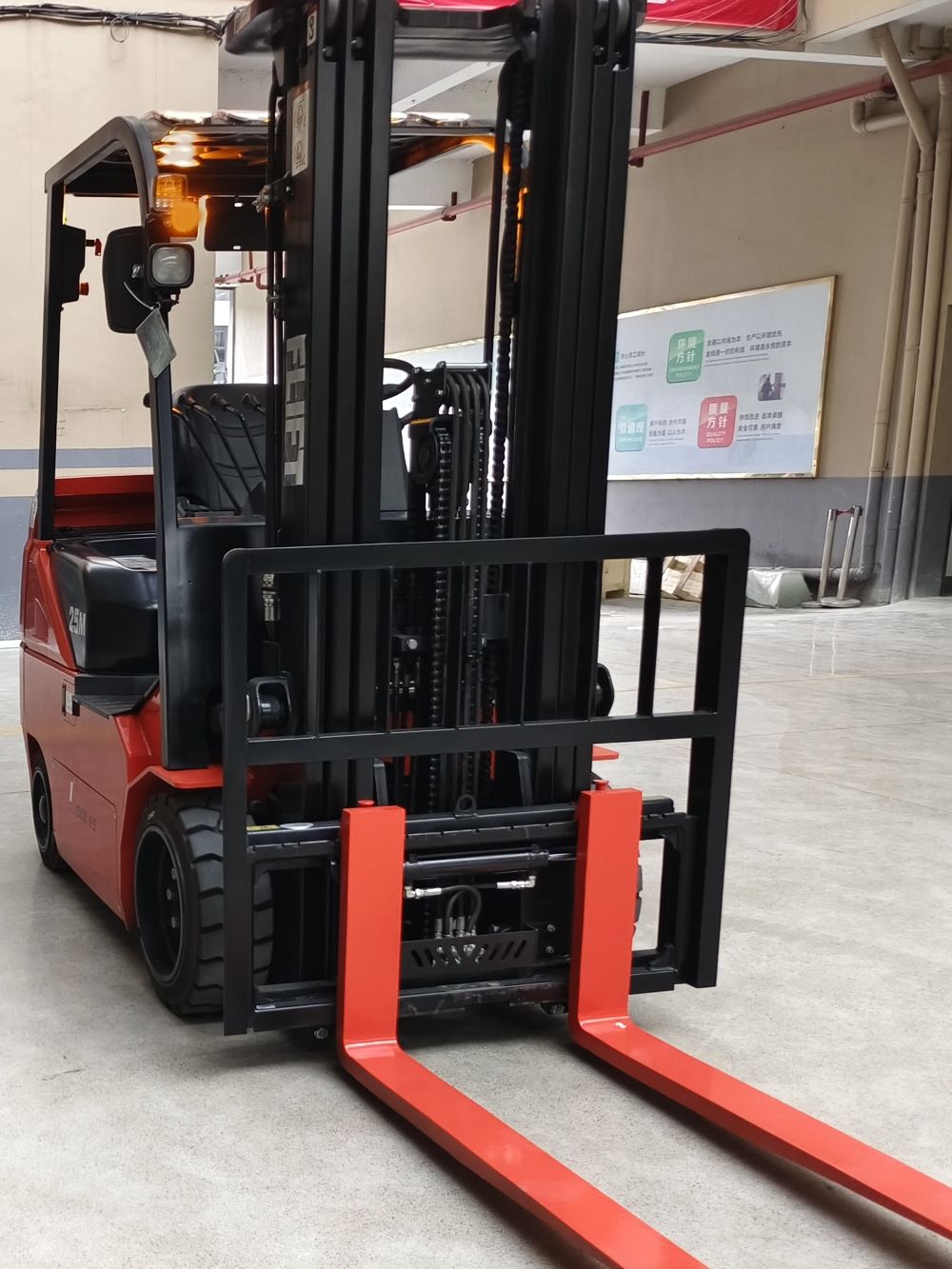
After the wheelbase is shortened, the turning radius of the forklift is significantly reduced (usually 30%~50% smaller than that of a standard forklift), and it can complete a 180-degree turn in narrow aisles, between shelves or in railway carriages to avoid collisions with obstacles.
Typical scenarios: narrow aisles in warehouses (aisle width ≤3 meters), material handling beside factory production lines, loading and unloading in containers, etc.
Compact body, strong passability
.jpg)
The vehicle is shorter in length and can easily pass through low door frames, corners or crowded work areas, reducing space occupancy.
Compared with standard forklifts: Under the same load, the length of short-wheelbase models may be shortened by 0.5~1 meter, which is suitable for indoor environments with limited space.
Load capacity adapts to scene requirements
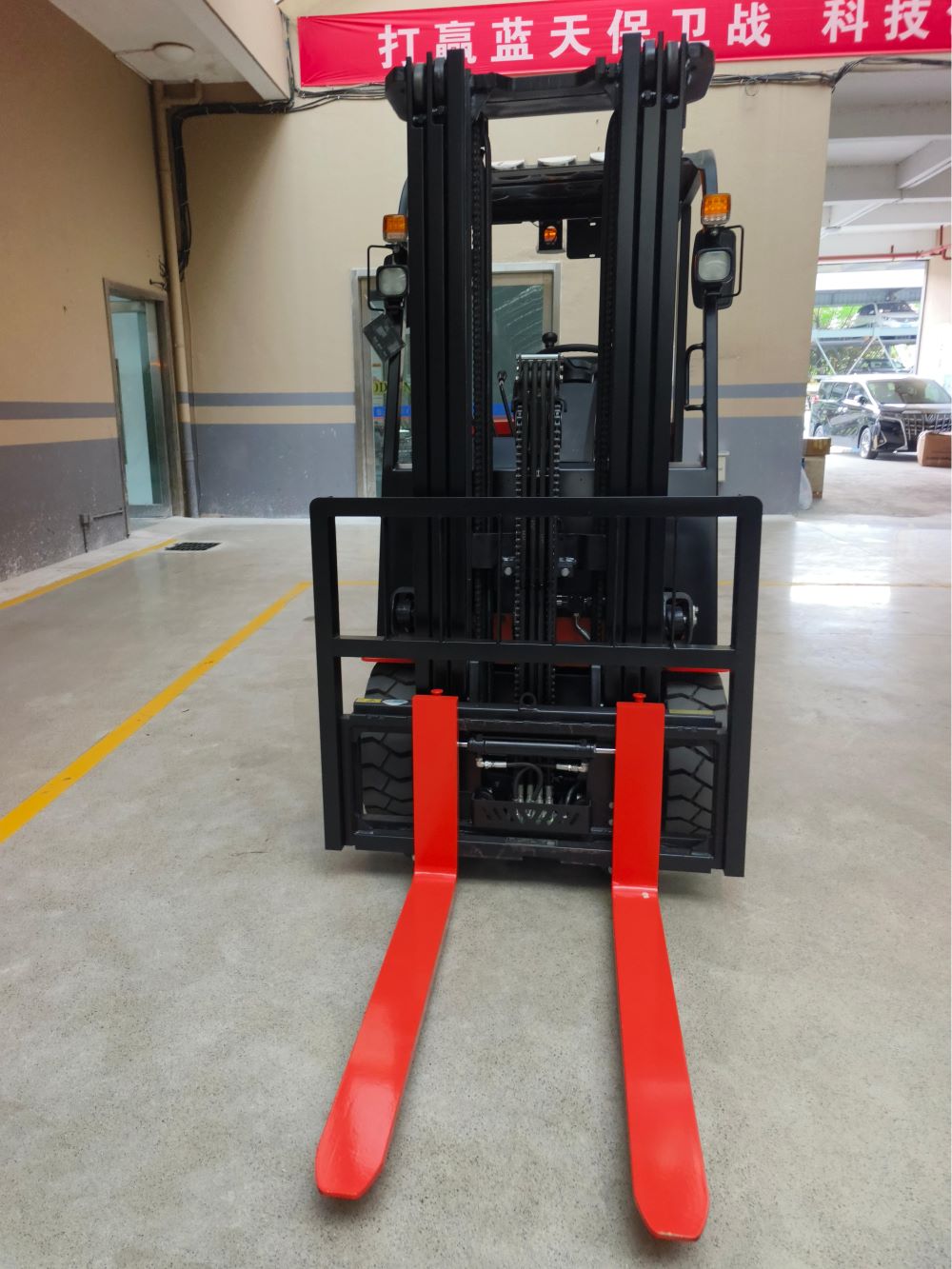
The rated load of mainstream short-wheelbase forklifts is usually 1~3 tons, and some heavy-duty models can reach 5 tons, meeting the needs of light and medium-sized cargo handling (such as pallets, packaging boxes, small equipment, etc.).
Note: Load and wheelbase are not absolutely negatively correlated. Some models can maintain high load capacity under short wheelbase through structural optimization (such as reinforced frame).
Diversified power types
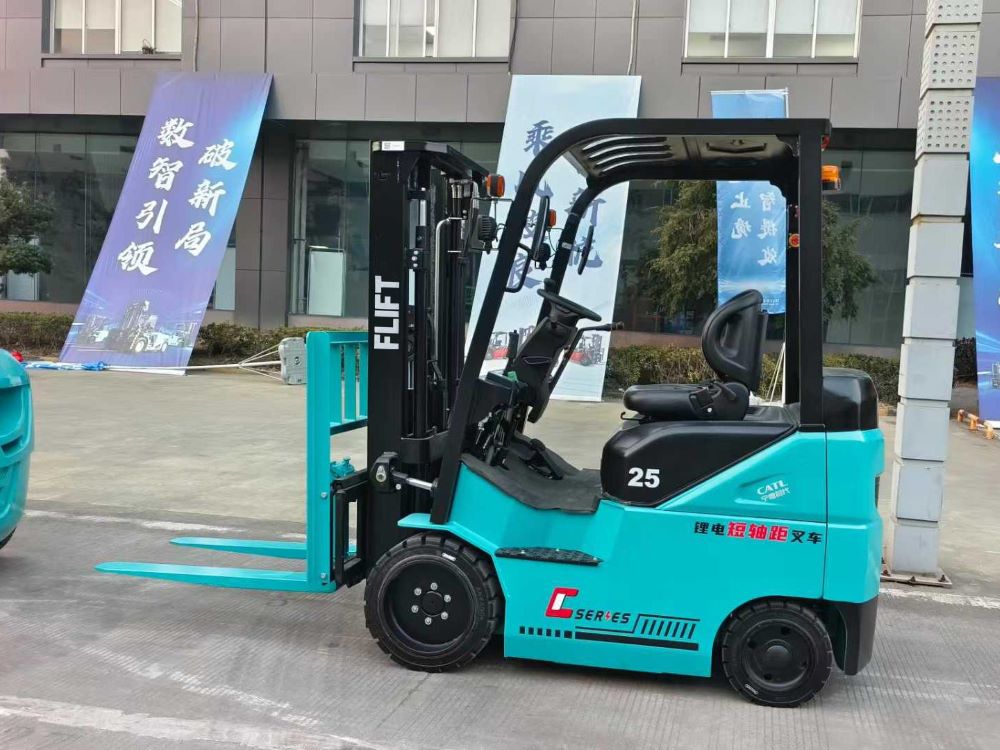
Electric type: powered by lithium battery or lead-acid battery, no exhaust emission, suitable for indoor environment, low noise.
.jpg)
Diesel/gasoline type: powerful, suitable for outdoor or heavy-load scenarios.
In what scenarios can short-wheelbase forklifts be used?
Short-wheelbase forklifts play a key role in many fields with their flexible and compact characteristics.
In warehousing and logistics scenarios, it can directly drive into the aisles of high-rise shelf warehouses, efficiently complete cargo storage and retrieval, avoid the waste of additional shunting space, and significantly improve warehousing operation efficiency.
In the factory workshop, it can freely shuttle between machine tools and production lines, accurately transport parts and semi-finished products, and meet the needs of intensive production layout.
In railways and ports, it can go deep into containers and train carriages for loading and unloading operations, overcoming the problem that traditional forklifts are too long to go deep; in the supermarket and retail industries, short-wheelbase forklifts can quickly move goods in narrow passages such as supermarket warehouses and convenience store back warehouses, effectively reducing the cost of manual handling, and becoming a powerful equipment for improving the operating efficiency and economic benefits of various industries.
What is the difference between short-wheelbase forklifts and other models?
.jpg)
|
|
Electric short wheelbase forklift |
Three-pivot electric forklift |
Electric standard wheelbase forklift |
|
Wheelbase |
≤1.5 meters (compact design) |
Usually 1.2~1.4 meters (wheelbase shorter than standard type) |
>1.5m (1.6~2.0m) |
|
Wheel structure |
Four-wheel design (2 drive wheels + 2 steering wheels) |
Three-wheel design (2 drive wheels + 1 steering wheel) |
Four-wheel design (2 drive wheels + 2 steering wheels) |
|
Turning radius |
≤2 meters |
≤1.8 meters (more flexible) |
≥2.5m |
|
Body length |
Shorter (suitable for narrow spaces) |
Shortest (three-wheel structure is more compact) |
Longer |
|
Flexibility / channel width |
Requires 2.5~3 meters of aisle |
Requires 2~2.5 meters of channel (minimum) |
Requires a passage of more than 3.5m |
|
Rated load |
1~3 tons (some up to 5 tons) |
1~2.5 tons (mainly light load) |
3~10 tons (some heavy-duty ones up to 20 tons) |
|
Applicable scenarios |
Indoor narrow aisles, factory workshops, supermarket warehouses |
Ultra-narrow space (such as elevators, laboratories, dense shelves) |
Indoor large space, outdoor heavy load, logistics center |
|
Typical application goods |
Light and medium pallets, packaging boxes, parts |
Small goods, laboratory equipment, lightweight storage items |
Large pallets, industrial equipment, heavy goods |
|
Cost characteristics |
Medium initial cost, low maintenance/energy consumption cost |
Low initial cost (simple structure), low maintenance cost |
High initial cost (strong load capacity), medium energy consumption cost |
|
Core advantages |
Balance flexibility and medium load |
Extreme flexibility (minimum turning radius) |
Heavy load capacity and stability |
If you need to carry 1.5~3 tons of goods, and the working space is a medium-narrow passage (such as an ordinary warehouse lane), and you want to take into account a certain lifting height and stability, then you can choose a short-wheelbase electric forklift.
If you only need to carry ≤2 tons of light goods, and need to work in an extremely narrow space (such as an aisle with a width of less than 2.5 meters) (such as dense warehousing, transportation in a small elevator). Then you can choose a three-point electric forklift.
What factors should be considered
when purchasing a short-wheelbase forklift?
The first thing to consider is the size of the operating space. It is necessary to measure the width of the channel and the size of the door opening to ensure that the minimum turning radius of the forklift matches the body length. Because the advantage of short-wheelbase forklifts is the smaller turning radius, if you have enough operating space, you can choose an ordinary forklift to avoid increased procurement costs and waste.
The second thing to consider is the load and lifting height. You can choose a model with the corresponding tonnage and lifting height according to the weight of the goods and the number of shelf layers (such as lifting height ≥ 6 meters, stability needs to be considered).
Finally, the power type should be considered. If it is indoors, electric is preferred, so as to avoid exhaust gas pollution of indoor air, and the noise is low, which will not cause noise pollution to operators and others. Diesel, gasoline, and LPG can be used as power for outdoor or long-term operations. The purchase cost is relatively low and continuous operation can be carried out.
.png)

